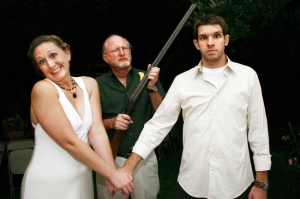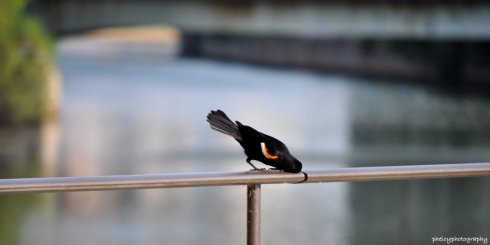When you are a child, you imagine animals pairing off neatly, like Noah’s menagerie coupling and marching up the gangplank to the chapel of bestial matrimony. Lovebirds are joined at the hip like a tween romance, and two swans form a perfect heart-shape with the teacup-handle arcs of their necks. Then you grow up, take a few biology courses, and discover that everything you thought was wrong. To your dismay, you realize that animals, even the kind that seem to exist in a monogamous marriage of sorts, cheat on one another constantly. Lovebirds get a little action on the sly; cuckoos can be cuckolded; monkeys can be real swingers; owls can get a little extra loving after midnight; house sparrows can be homewreckers; even swans, those regal symbols of romantic love swimming atop a wedding cake, are less backyard birds than backdoor men. In the avian world, it’s estimated that 90% of bird couples are socially monogamous (as opposed to 7% in mammals), but of those, 90% are sexually non-monogamous. Long under the spell of prudish human social norms and presuming fidelity among animals, scientists now seem to revel in revealing the promiscuity of the animal kingdom. But if polyamory is the true norm, that makes the monogamous animals the true weirdos, and therefore worth a closer look-see. What is the biological root of monogamy?
Without cracking open the scientific Ark of the Covenant that question implies, or the world’s largest can of worms that is human sexuality, let’s just talk about the birds. (And, this time, not the bees.) Can anything be said of that thin sliver of avifauna that is both sexually and socially monogamous? Yes, it seems. Most of the few birds that are both socially and sexually monogamous do it for the same reason many married couples do: for the kids. These are birds that live in such a hostile habitat that it takes every ounce of parental care to nourish their chicks. In other words, the parents would cheat on each other; they just don’t have the time or energy.
Seabirds in rocky, windy, or icy climes — like Emperor Penguins — make up the majority of sexually monogamous pairs, but one type of bird creates a hostile habitat for itself specifically so it cannot engage in extra-marital canoodling. That’s because in this species, the female is literally imprisoned behind a wall. It’s the Monteiro’s Hornbill of Namibia, and it is a master mason on the level of an Edgar Allen Poe antagonist. A mated pair of hornbills will scope out a suitable neighborhood to nest, preferably a stand of old-growth forest with large cavities in the trees. The holes may have been made by a fallen branch, or may have been carved out by a woodpecker. But however it’s made, it should be large enough for the female to enter and sit comfortably. She chooses carefully, because she’s going to be inside for a very long time.














